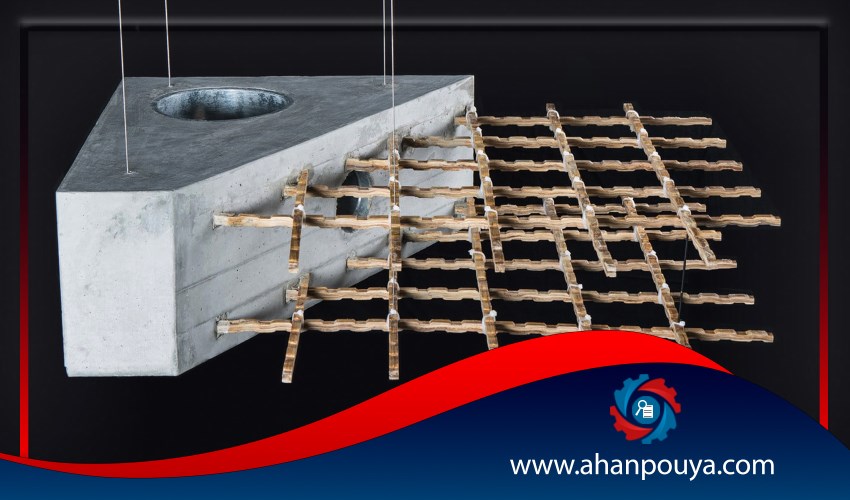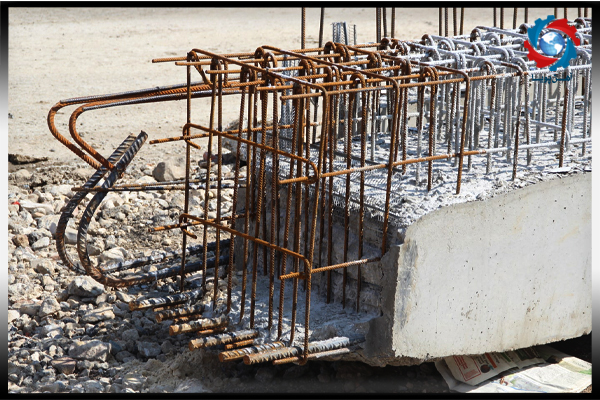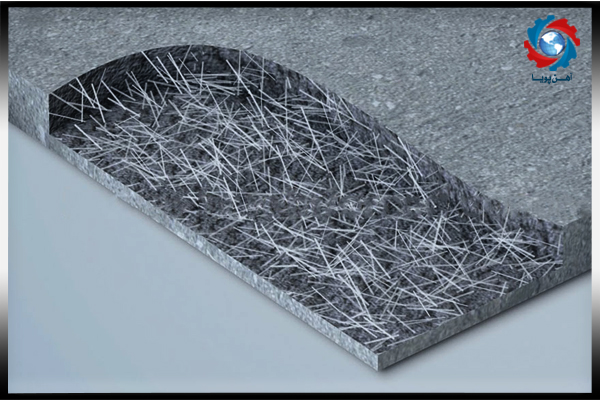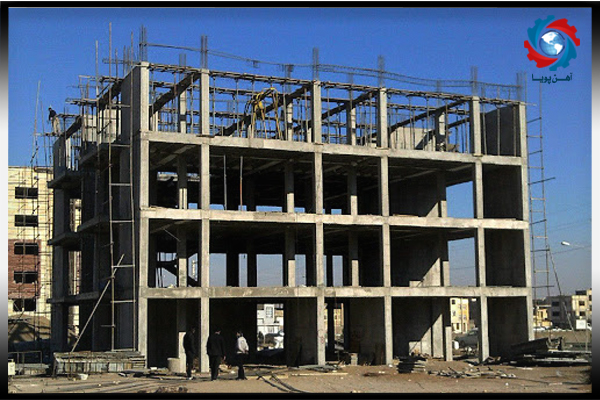
Concrete is a sticky substance that is obtained from the interaction of hydraulic cements and water. Concretes have different types and their main constituents are water, various types of cement and aggregates.
Reinforced concrete is concrete that is reinforced with rebar. In addition to rebar, reinforcing mesh, metal plates and reinforcing fibers are used to reinforce these concretes. This type of concrete can be used for important structural components such as roofs and columns.
The ultimate goal of using this type of concrete in the structure is to transfer the tensile forces created in the concrete to the rebars so that the tensile forces do not enter the concrete and do not cause cracking and eventually concrete cracking.

In general, concrete is composed of cement and aggregate, to which the addition of water causes this compound to harden. When in the reinforcement operation of concrete, we put the steel that has a very high tensile strength inside the concrete, it causes the resulting reinforced concrete to have a very high resistance against any pressure, bending and tensile stresses.
Reinforced concrete can be used in various shapes and dimensions for a variety of structures in construction. The main quality of reinforced concrete is the similarity of its thermal expansion coefficient with steel, which eliminates the internal stresses caused by changes in thermal expansion or contraction.
In this type of concrete, the adhesive property that exists between steel and concrete causes the created surface to subside and an alkaline layer is formed on the surface of our steel bars, thus increasing the resistance of steel to corrosion.
Among the types of reinforced concrete, we can mention fiber reinforced concrete. Fiber-reinforced concrete or fiber-reinforced concrete is concrete that is made of hydraulic cement, fine-grained and coarse-grained stone materials, and separate and discontinuous fibers. This type of concrete can be made of natural materials such as cotton, cellulose or can be made of synthetic materials such as glass, steel, carbon or polymers.

1. In structures that use ordinary concrete, cracks are obtained in the concrete that reinforced concrete prevents the formation of these cracks.
2. Compressive and tensile strength of ordinary concrete is very low compared to reinforced concrete.
3. Steel rods used in reinforced concrete prevent any slipping in the structure, which has not been used in ordinary concrete.
In fibrous concrete, more fine-grained cement and sand and coarser-grained sand with a smaller size than coarse-grained concrete are used. Fiber concrete has a much higher tensile strength than ordinary concrete. This type of fiber reinforced concrete is less resistant to moisture and temperature than ordinary concrete. With increasing temperature and humidity, the resistance of reinforced concrete to fibers decreases.
1. Tunnels
2. Types of ceilings
3. Building columns and most columns with high height
4. Building foundations that need a lot of concrete
5. Types of shear walls
6. Types of concrete structures


Ahan Pouya with more than a decade of best-selling experience, adheres to professional and ethical principles in the field of selling and buying at inside and outside the borders of Iran, helping you in the steel industry.